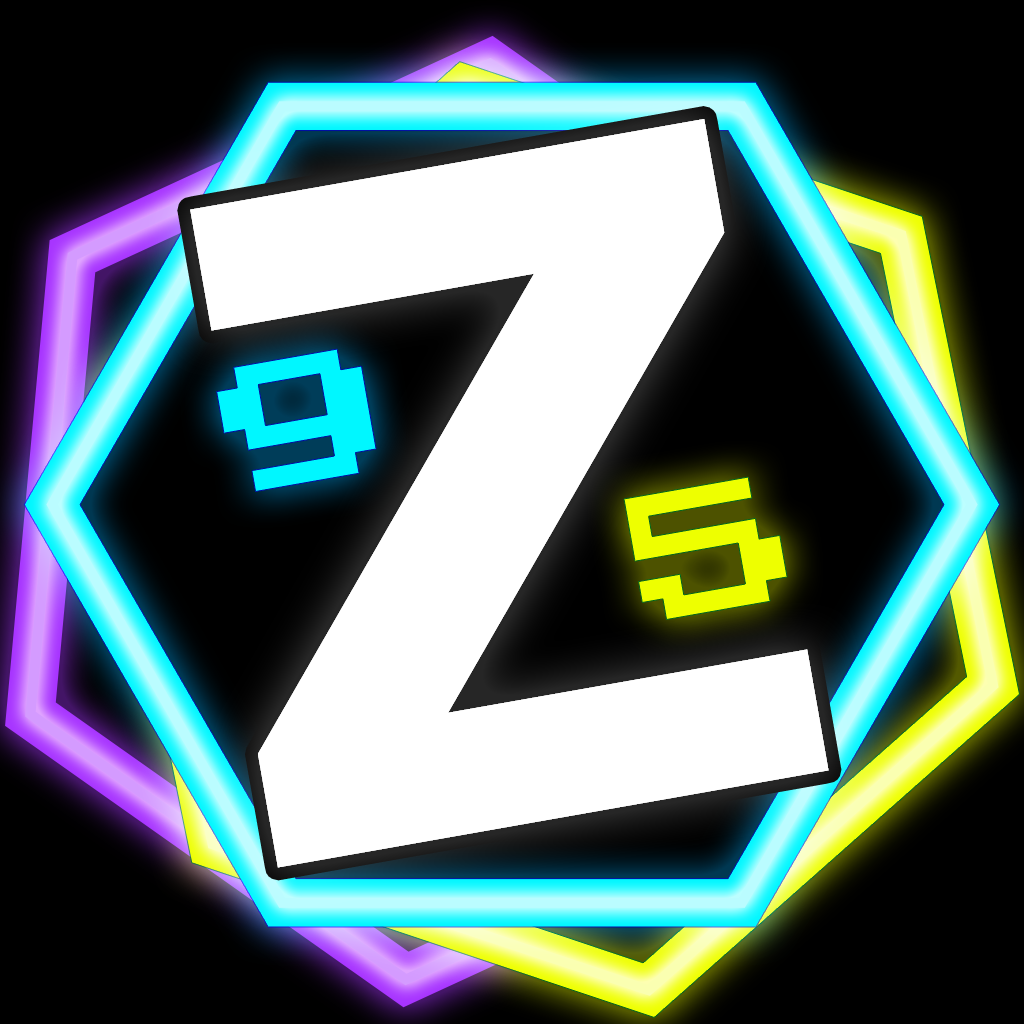*ssd. HDDs are somewhat good for storing large amounts of data, and the os ain’t it (unless windows, probably)
I have a 256gb ssd for the os since windows likes to devour hardrive space for reasons unclear to me, a 2tb ssd for games and other applications I need to move quickly, and a 2tb hdd for general storage. It all works pretty well together.
macOS is pretty bad about using up storage space. There are always huge 10gb+ cache files for cloud related stuff. Even if I’m like, don’t store it locally.
I’ve not used macOS in years, so many that issue has been resolved.
That reminds me of when I used to have an iPhone and needed to free up storage, and there was this cursed mysterious “other data” block that took up like a majority of it.
I’m sure it’s the exact same thing happening in both operating systems.
It’s just clouded cache files that need to be cleaned up.
macOS is pretty bad
Could have just stopped there 🤷
I still prefer it over windows. If it were not for their absurd pricing, I’d have a MacBook Air over my thinkpad.
I’d much prefer to run Linux, but I’ve yet to find a way to do my main work task on something other than Mac or windows.
Honestly if it weren’t for the headache of some software still not ported over to arm 4 years later, Macs would be pretty good for software development since they have a lot of the POSIX tooling.
For the same reason I have windows so that games will “just work,” I have Linux so my programming setup will “just work.” Low level languages like C/C++ are so much easier to work with on Linux.
A better analogy is a Ferrari towing tree trucks
My OS takes up about 25gb. I have individual games that take up more than 100gb. That kind of OS/storage split is necessary nowadays.
How do you install a window game to a drive other than c??
I recall installers always asking you where you want to install things. Sometimes, that’s hidden behind “custom install” or something like that. Is that not the case anymore?
It’ll generally default to C drive on Windows. Most of the time, you’d click “browse” and select another drive.
I just highlight the “C” portion of the path and change it to “D.” No browsing, and the program gets put in whatever folder it wanted to be in.
Also in Steam you can add a library anywhere you want and it’ll install and manage your games there. :)
Steam lets you install on any drive. You can set it as a default.
My D drive is for games, and my E drive is for spillover games.
By telling it to install to d, e, f, or whatever drive you want in the installer. You may have to choose the {advanced install options] for some programs, but it’s always possible to change the path of installation.
With wine. And some alcohol.
I don’t see what Alcohol 120% has to do with anything lol
120% vodka goes really hard. That’s 20% more ethanol per ethanol.
“Cave Johnson, we’re done here.”
In steam at least there’s a setting to add a separate steam library at another folder. You can make that folder on your other drive and then have new games install there by default.
I mostly get my games through steam, which allows you to set multiple library locations, and then asks which drive you want them installed on. Besides that, every game or program installer I’ve ever used has asked me which drive I want it installed onto, although sometimes you need to check the custom install box first
System drive: 1TB
Use case: Very important stuff like drivers etc. or programs that refuse to use anything besides C:\ or put their stuff into AppData.Gamedrive: 4TB.
use case: Roms, game launchers, emulator files.For my main machine: Sys, 1TB. Games, 4TB (actually 2x 2TB in raid0). Backups and misc: 10TB. Daily backups, g/f/s for sys, and incremental daily with monthly full for games.
Then I have all my media and actual files on a nas, along with the desktop, documents, downloads synced between all machines; any files that are for storage and drive images (for machines with only 1 drive and cannot manage images locally) get stored here too. 2x 10TB.
Then those drives are in raid1, are under btrfs with snapshot abilities, are backed up to a 8TB external every month, and unplugged after a successful backup to avoid a ransomware attack scenario. This drive is actively cooled to prevent overheating with hours of read/write activity. Every night, critical files are also backed up to two different off-site data storage services, on different continents.
I got tired of data loss 15 years ago, and now I horde everything, but it’s all for a purpose. Game saves, stories, photos, archived projects long forgotten, and so much more.
Ok, why do you have 1TB sys drive?
That was my previous game drive, and I had a small ssd (I think 256GB).
E: to clarify, I went from sata to nvme, and the sata ssd is now in another machine. The drive that came out of that machine is 480GB and is now powering a Debian 12 server.
Makes sense.
deleted by creator
It blows me away when I play a game like Valheim or Vampire Survivor and find out the game that took 1000 hours of my life is smaller than a two hour movie.
Meanwhile Quake: I took you life and soul in 50 megabytes
When I built a new PC last year, I was wondering how I managed to filled up a 4TB NVME in only 6 months… until I downloaded one of those programs that breaks down your hard drive usage.
Games, it’s all games. I don’t even consider myself a gamer. I can’t even begin to imagine the struggle of an actual gamer who is still stuck with a 256GB SATA SSD as their only high speed drive. What do you do when nearly every game that comes out these days is 100GB+ and requires an SSD?
until I downloaded one of those programs that breaks down your hard drive usage.
Is it baobab?
Could be Filelight
Also the system files aren’t really the most important files. While it’s a pain in the ass, you can reinstall your OS and get that all back again.
Reinstalling all of your games is going to take more time, and if you lost a save file, well you’re never getting that back. Personal photos, videos, etc. are even a bigger priority.
So I tend to to think of the drive /home is mounted on to be the “primary drive” as it’s the most important. The root is just the system files, needed for the OS, but not nearly as important as /home.
deleted by creator
Not me got a 4tb gen 3 nvne for my main and a 2tb gen4 nvme + 2tb sata ssd… And a 18tb, 12tb, 4tb, 3tb, 1tb HDD for other things…
Good golly gee whiz that’s a lotta porn! You saving up for a rainy day or somethin?
Sorry, that first line reminded me of this
The zombie apocalypse, also known as DJT winning the presidency, somehow… Again…
How do you even manage that much storage? Btrfs or snapraid or something?
Windows…
I’m so sorry.
I feel like attaching a second drive to my deck defeats the purpose
deleted by creator
I just slap two 1tb nvme drives in raid0 to get 2tb and all the speeds. If it comes crashing down all my stuff is stored on my server that I care about and I try to not keep more than a few games installed plus with fiber it takes a few minutes to re-download anyways, now I just need to setup a regular backup of my config. I have a habit of doing a clean install every few months so I’m used to living mostly off my server at this point
NixOS is whispering in your ear
My usual go to drive layout, when it’s impractical to put everything on a single drive, is to have a fast, but small, OS drive with core applications, if it’s large enough then also use that for user data. Add in drives for anything/everything else size intensive. Like for games, I’ll get a lower quality SSD that’s larger than my OS drive, like grabbing a SATA SSD that’s 3-4 TiB for games, with a 500GiB NVMe OS drive for programs and user data.
If money is tight, then having your fastest storage for OS and using a HDD for everything else, is a decent option…
For a while there I was running a 240GiB OS drive, and relocated all my user data, and games to a 1TiB HDD. The system ran fine like that, with few exceptions.
One big issue was that major windows updates basically failed every time, it would seem that having your user account/profile anywhere other than C:\ is problematic for that kind of thing. It’s odd, but ultimately not that big of a deal. Regular security updates and whatnot worked without any issues.
Dont skimp on ssd for games. Large sata is fine. Hdd for games is not fine. Get worse anything else instead . Loadings are gonna be the death of you.
It’s not as bad if the HDD is dedicated to games. With your os and games on the same drive, you’re going to get wrecked.
I’d still recommend all flash everything in a decent home computer/gaming rig, but on a budget, at least separating your os from your games on different physical drives can help quite a bit.
What the f*** is this? Where’s my TÜV? This is even a German license plate, what the third-world-hell is going on here
256 GB root NVMe, 1 TB games hdd, 3* 256 GB SSD as raid 0 for local backups, 256 GB HDD for data, 256 GB SSD for VM images.
Why would you put local backups on RAID 0?
Because that’s what Raid 0 for, basically adding together storage space with faster reads and writes. The local backups are basically just to have earlier versions of (system) files, incrementally every hour, for reference or restoring. In case something goes wrong with the main root NVMe and a backup SSD at the same time (eg. trojan wiping everything), I still have exactly the same backups on my “workstation” (beefier server), on also a RAID 0 of 3 1 TB HDDs. And in case the house burns down or something, there are still daily full backups on Google Cloud and Hetzner.
Raid 0 offers no redundancy though. If any of those three disks fail, you lose the entire volume.
For the sake of backups, switching to Raid 5 would be more robust
If it fails, I will just throw in a new SSD and redo the backup. I sometimes delete everything and redo it anyway, for various reasons. In any case, I usually have all copies of all files on the original drive, as local backup on the device and backup on the workstation. And even if those three should fail - which I will immediately know, due to monitoring the systemd job - I still have daily backups on two different, global hosters as well as the seperate NAS. The only case in which all full backups would be affected would be a global destruction of all electronics due to solar storms or a general destruction of earth, in which case that’s the least of my problems. And in case the house burns down, and I only have the daily backups, potentially losing 24 hours of data, that’s also the least of my problems. Yes, generally using Raid 5 for backups is better, but in my case I have multiple copies of the same data at all times, surpassing the 321 rule (by far - 622, and soon 623). As all of my devices are connected via Gigabit, getting backups from eg. the workstation after the PC (with backups) died is just as fast as getting backups from the local PC backup Raid itself. And using Raid 0 is better (in speeds) than just slapping them together in series.
deleted by creator
Well its for faster speeds. So I dont get why you would do a backup on a more fragile but faster storage. You described in another comment that you have many other backups, which is awesome. So good on you for taking care of everything. But yhea, using the opposite of what would be better for backups seems a bit counterintuitive to me. And to presume that it doesn’t matter to use the more secure option because you have many other backups anyway, is also slightly weird since why bother in the first place then.
I don’t mean any hate, you’re doing way better than me. Can I ask how fast the RAID 0 gets? And how much it would be on individual drives. And how much data you have to backup daily.
Much respect for your setup, you’ve taken redundancy seriously and I doubt you’ll ever lose anything.
The local backups are done hourly, and incrementally. They hold 2+ weeks of backups, which means I can roll back versions of packages easily, as the normal package cache is cleaned regularly. They also prevent losing individual files accidentally through weird behaviour of apps, or me.
The backups to my workstation are also done hourly, 15 minutes shifted for every device, and also incrementally. They protect against the device itself breaking, ransomware or some rouge program rm -rf’inf /, which would affect local backups too (as they’re mounted in /backups, but those are mainly for providing a file history as I said.)
As most drives are slower than the 1 Gbps ethernet, the local backups are just more convenient to access and use than the one on my workstation, but otherwise exactly the same.
The .tar.xz’d backups are actual backups, considering they are not easily accessible, and need to be unpacked and externally stored.
I didn’t measure the speeds of a normal SSD vs the raid - but it feels faster. Not a valid argument, of course. But in any way, I want to use it as Raid 0/Unraided for more storage space, so I can have 2 weeks of backups instead of 5 days (considering it always keeps space for 2 backups, I would have 200- GB of space instead of 700+).
The latest hourly backup is 1.3 GB in size, but if an application is used which has a single, big DB that can quickly shoot up to dozens of GB - relatively big for a homeserver hosting primarily my own stuff + a few things for my father. Like synapses’ DB has 20 GB alone. On an uneventful day, that would be 31 GB. With several updates done, which means dozens of new packages in cache, that could grow to 70+GB.
So awhile back I tried this by having my system SSD be a smaller 500GB drive and I had another 1 TB SSD for games but turns out I was doing it all wrong.
Seriously just invest in a 1 or 2TB M.2 SSD and thank me later, especially if you’re on windows. Then have a hard drive for programs you care less about and for data storage. My current config has even kept the 1TB SSD as an auxiliary gaming drive that I use for games of lesser importance or demand.
I just wouldn’t ever put a windows install onto a drive that’s slower than any of your other drives and also you have to be very careful about the size of that drive. I tried to do this on a 100GB SSD like a decade ago and it didn’t go very well
If you have enough data for a extra hard drive id recommend a nas.
A good 2Bay one is between 100 and 200. Add 2 drives for a raid 1 and your data is protected against drive failure. Now you have a storage place that is accessible from all Devices. Wanna watch a video?Well its there and playable from PC, Phone or your TV.
You know how that goes though, now the ethernet isn’t fast enough to allow that nas experience to be seamless. 2.5gbit… 10gbit? Now you need a new switch maybe a new router too. It just goes downhill from there haha
One of us! One of us! One of us! One of us!
Funnily enough, network is the only thing i didnt touch. I changed my habbits so that my server does all the work/heavy lifting. I started with a cheap 2bay nas, switched to a 4bay micro server, that i later modified to 5 for an cache ssd. From there i build a am4 machine from scratch and added a ups.
Currengly im waiting gor a good deal on drives as the used space slowly creeps from 22tib to 23tib(100% used)
deleted by creator
I’m dumb. Any advice on how to get started with something like that? I’d appreciate product recommendations appropriate for a newb
Synology is a NAS Iʼd recommend. However, after you become more familiar with the command line and if you are building your own Debian machine with a motherboard that supports many hard drives, I would recommend something like this procedure; this applies especially if you are the only one who will be accessing the files and are just wanting a way to combine the storage capacities of multiple hard drives.
I did the same. Have not had any real problems with the configuration. I would have gone for more storage but high speed high capacity ssds do get expensive.
I found that moderate compression (like zstd-2 or -3) not only increases your effective storage capacity, but increases R/W speeds for HDDs.
At the time I got my current system, I did 1tb SSD for the main, and a 4tb HDD for data drive.
For my next system, I think I’ll split that a bit more evenly, as most of my games end up on the HDD which means they a bit to load


















